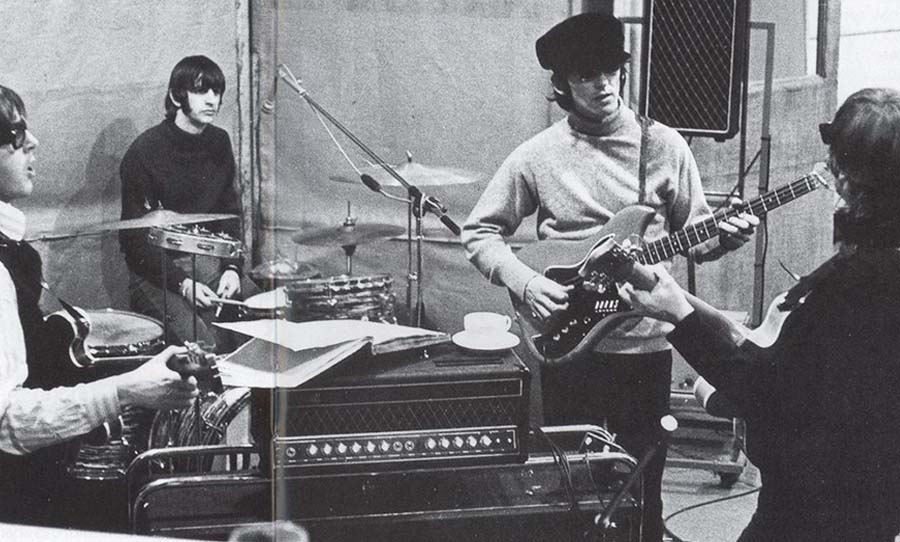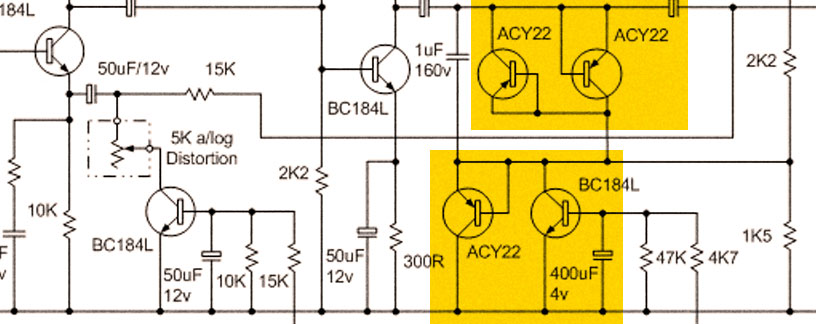Sometimes iconic tone can come from unexpected places.
I’ll elaborate: sometimes iconic tone can accidentally come from unexpected places, like Keith Richards’ tape recorder arguably creating the first hit with a fuzzed-out riff, or that Marty Robbins session in 1961 where engineer Glen Snoddy used the wrong channel on the desk for the bass, creating the first known instance of fuzz on record.
It’s hard for me to state whether the subject of this post was a result of a happy accident or if it was engineered to be like that, but let me start by saying: Man, Vox had some really far-out ideas about signal clipping in the mid 60s. Sure, everybody loved the AC30, and they even made AC50s and AC100s in a feeble attempt to get the Beatles’ music heard over the manic screaming of fans in packed venue after packed venue.
Transistors by that time had become powerful enough that most Hi-Fi systems of the day were already eschewing vacuum tubes in favour of solid state designs. They were more stable, they provided more power without distorting and they used a lot less energy and were cheaper to manufacture. So it’s safe to assume that someone at Vox thought it would be a good idea to apply the same logic to guitar amps: use the newer, more durable and stable transistors for the preamp stage and let the tubes just do the heavy lifting.
This gave rise to the first series of Vox amps with a solid state preamp: the loftily named Conqueror, Defiant, Supreme and Virtuoso. Of course, being the highest-profile artists associated with Vox at the time, The Beatles were given all of those as gifts, and actually put them to work in the studio.

Now, while the power amps of these new Vox models were par-for-the-course EL84 designs, the preamps were something different. They had a sound of their own, different from the usual AC30 and AC15. And while most manufacturers that were discovering solid state preamps at the time were just overloading the transistors or using clipping diodes for an overdrive sound, Vox had a different idea: have four PNP transistors, interconnected a number of different ways, acting as diodes to effectively clip the signal.

The result was a harsher, scrappier overdrive tone, sometimes bearing on fuzz. This can be heard in several Beatles recordings starting around Rubber Soul up until The White Album, by which time John and George had mostly switched to using Silverface Fender Twins.
Now, I had spent months poring over schematics and trying several overly complex this-will-never-make-it-to-production experiments on the breadboard, with varying degrees of success. In my usual way, I wasn’t trying to straight-up copy the schematics that Vox used back in the day, but more trying to hone in on the tone. What I ended up with was a somewhat surprising design, but one that is fully functional and performs as I expected it to. It gives me that tone, from “Drive my Car” to “Helter Skelter”, passing through “Paperback Writer” and “Taxman” on the way. And it is one of George Harrison’s witticisms from that very track which I settled on when naming this pedal. The background chanting of “Ah-Ah, Mister Heath” is obscure yet open enough of a reference. Those who need to know, will know.